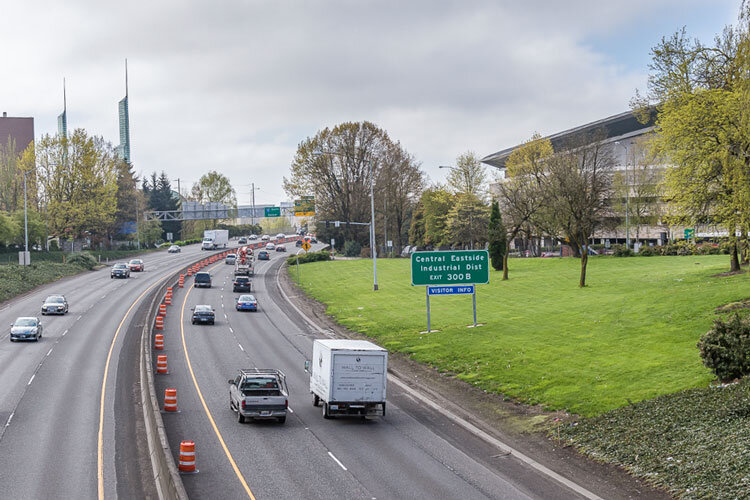The ‘No More Freeways’ mantra is extending Portland’s worst bottleneck
By Vlad Yurlov – Cascade Policy Institute
This story was produced and first published by the Cascade Policy Institute. It is published here with the permission of and full attribution to the Cascade Policy Institute.
As a new driver, I avoid Portland’s Rose Quarter because I’m not eager to test my car’s insurance policy. There were over 800 crashes in the Rose Quarter between 2011 and 2017. It’s congested for most of the day and drivers must bob-and-weave through the short lanes between ramps.

That could change with the Rose Quarter Improvement Project. The project, approved by the Oregon legislature and signed by Governor Kate Brown, would relieve the largest bottleneck in the region by adding auxiliary lanes and expanding safety shoulders.
But, the big project is also a big target. Anti-freeway activists are trying to delay the much-needed improvements by filing a lawsuit in federal court. They are using the same tactics that dragged down many of then-President Barack Obama’s so-called “shovel ready” jobs under his 2009 stimulus package.
The American Recovery and Reinvestment Act of 2009 attempted to push $48 billion into infrastructure projects. But many projects were stuck in limbo, due to the National Environmental Policy Act (NEPA). Projects faced years of regulatory battle before the stimulus funds could be put to use. The Rose Quarter Improvement Project carries on this tradition of “shovel ready” jobs rusting under regulatory pressure.
To comply with NEPA, projects that receive federal funding must check for any chance that a project would result in significant environmental impacts. According to experts, the Rose Quarter Improvement Project could have been exempted from such analysis, but the Oregon Department of Transportation (ODOT) opted for an Environmental Assessment to iron out any uncertainty. The assessment involved weeks of public comments and studies surrounding air quality, noise, and greenhouse gas emissions. After working with ODOT to prepare the assessment, the Federal Highway Administration concluded there would be no significant impacts.
ODOT addressed concerns about methodology and results to appease critics. In addition, the department hired a team of experts to review the Environmental Assessment. The review found ODOT went beyond federal requirements and reported that “there was nothing in the findings that would indicate [an Environmental Impact Statement] is the appropriate place to go.” Furthermore, the Federal Highway Administration “carefully reviewed the methods and results of the traffic analysis, and the agency concurs with the findings and conclusions reported in the Environmental Assessment….”
Despite state and federal findings, a group calling itself No More Freeways rejects the project’s Environmental Assessment by questioning their methodologies. The lawsuit seeks to force the project to produce an Environmental Impact Statement. According to the peer review team, such a process would set the project back by around three years and $60 million.
No More Freeways argues that the impacts of future tolling on I-5 and I-205 should have been analyzed within ODOT’s Environmental Assessment. In fact, ODOT is already running a technical analysis of how tolling could work on the highways, but results are expected to be complete by late 2022. In any case, both the build and no-build scenarios could incorporate tolling in the future. It’s the cramped layout of the Rose Quarter that is the main problem.
Opponents of the project also claim ODOT and the Federal Highway Administration did not address the impact of the “induced demand” they believe the highway improvements will cause. But, the Federal Highway Administration found that modeling “did not indicate increases on I-5 much beyond the Project limits (i.e., no induced demand).” In addition, the trip increases on the auxiliary lanes between connecting ramps are expected to be “primarily local” based on available modelling.
To delay the Rose Quarter Improvement Project by years and spend upwards of $60 million extra dollars is to deny Portland commuters safety and congestion relief. Instead of cheering for ODOT going above-and-beyond its Environmental Assessment, opponents of the project are sticking to the “No More Freeways” mantra. And apparently they mean it. So far, they have opposed any project that would increase road capacity and reduce congestion. I believe the director of the Rose Quarter Improvement Project spoke for everyone stuck in traffic when she told The Oregonian “the need for the project isn’t going away.”
Vlad Yurlov is a Policy Analyst at Cascade Policy Institute, Oregon’s free market public policy research organization.




